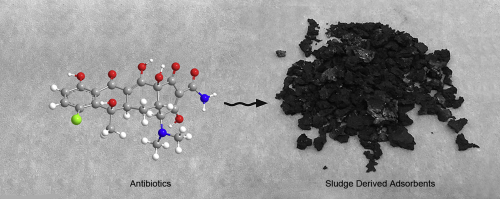
In this US study, materials derived from sewage sludge and waste oil sludge were tested as adsorbents of pharmaceuticals from diluted water solutions.
Simultaneous retention of 11 antibiotics and two anticonvulsants was examined via batch adsorption experiments. Virgin and exhausted adsorbents were examined via thermal and FTIR analyses to elucidate the adsorption mechanisms.
Maximum adsorption capacities for the six materials tested ranged from 80 to 300 mg/g, comparable to the adsorption capacities of antibiotics on various activated carbons (200–400 mg/g) reported in the literature.
The performance was linked to surface reactivity, polarity, and porosity.
A large volume of pores similar in size to the adsorbate molecules with hydrophobic carbon-based origin of pore walls was indicated as an important factor in promoting the separation process.
Moreover, the polar surface of an inorganic phase in the adsorbents attracted the functional groups of target molecules.
The presence of reactive alkali metals promoted reaction with acidic groups, the formation of salts, and their precipitation in the pore system.
Water Research, Volume 46, Issue 13, 1 September 2012, Pages 4081–4090.




